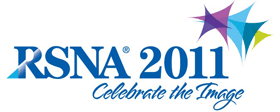
Abstract Archives of the RSNA, 2011
Asim F. Choudhri MD, Presenter: Nothing to Disclose
1) To have an understanding of available applications available for mobile medical imaging, including native clients, web clients, and virtual desktop/terminal server approaches. 2) To have an understanding of bandwidth concerns in mobile medical imaging, including device data handling, network speeds, and possible bandwidth cost issues. 3) To have an understanding of possible clinical implementations of mobile medical imaging within radiology departments and in health care networks overall.
Applications: There are several vastly different approaches to mobile viewing of medical images. Native clients are programs written using a software development kit for a given platform. These clients can retrieve data from remote servers and view locally stored image data. Web clients are web-based programs which are often (but not always) platform independent. They will typically access remotely stored data which may be stored in a local cache but is usually not permanently stored on the mobile device. Virtual desktop/terminal server software allows a mobile device to access a remote computer or server. The remote server handles all higher level processing and data storage, minimizing the processing requirements of the mobile device but possibly straining bandwidth limitations. Examples of several applications using each of these approaches will be presented, with a discussion of pros and cons for each method as it pertains to an individual user and as it pertains to widespread implementation within a healthcare network.
Bandwidth: Viewing medical images may require transfer of datasets that are tens or hundreds of megabytes in size. This provides a special challenge for mobile devices which typically receive data via wireless communication. If using a cellular network, network bandwidth can be a limiting factor (as can data transfer costs). File compression can reduce the size of files, however requires data processing power and may involve compromises in image quality. Once data is on a device, image processing may overwhelm its processing capabilities compared with dedicated PACS workstations. We will discuss both network and device bandwidth concerns as it relates to mobile medical imaging, and possible solutions for overcoming obstacles.
Integration into a healthcare system: Mobile review of medical imaging is a tool which has potential to significantly change health care delivery, but the specifics for implementation are unclear. After a device platform has been selected, security protocols established, and bandwidth concerns solved, each institution will need to determine what role this technology will play. Possibilities include radiology residents (or even faculty) consulting with subspecialty faculty, surgeons and interventionalists triaging patients for procedures and for procedure planning, however these approaches are simply extensions of existing practices. New frontiers in consultation will be discussed, including an example involving mobile imaging review in a multidisciplinary stroke team. Guidance will also be provided regarding training and establishing institutional “standard operating procedures” documents. The current state of medical-legal concerns and risk management strategies will also be discussed.
Choudhri, A,
Apps, Bandwidth, and Integration. Radiological Society of North America 2011 Scientific Assembly and Annual Meeting, November 26 - December 2, 2011 ,Chicago IL.
http://archive.rsna.org/2011/11001636.html

